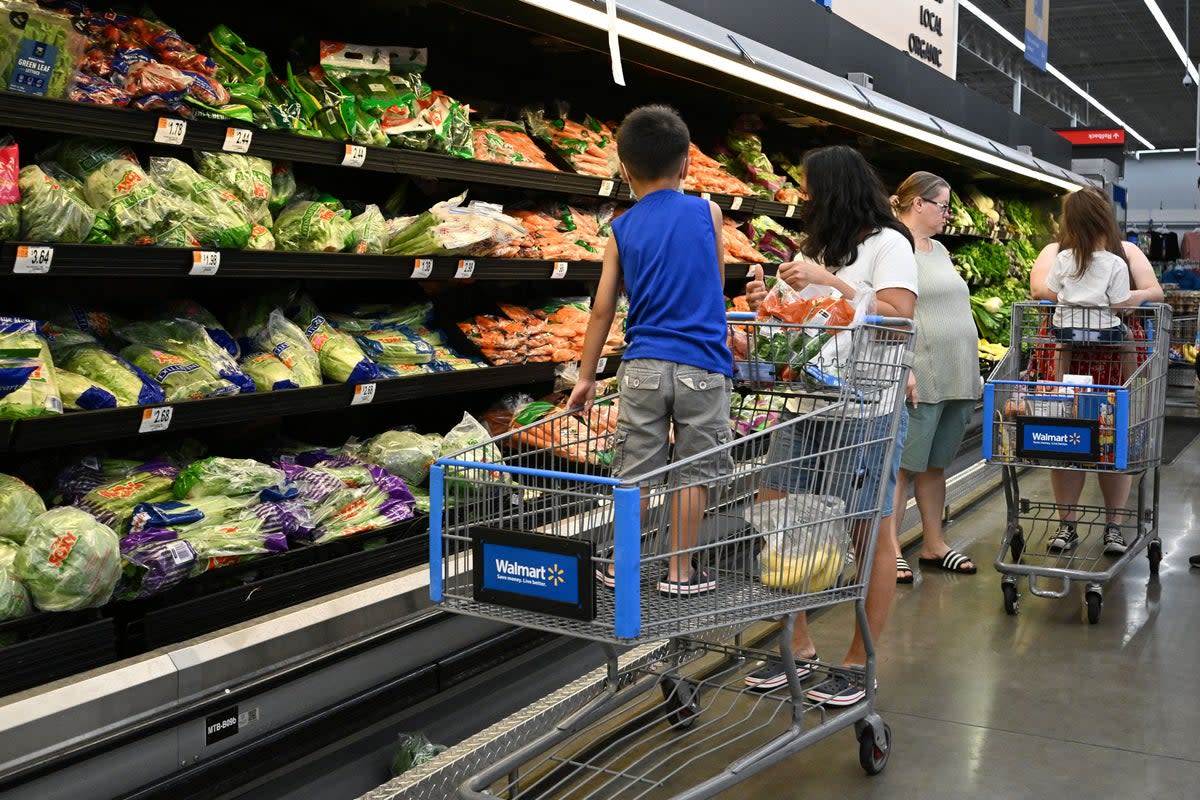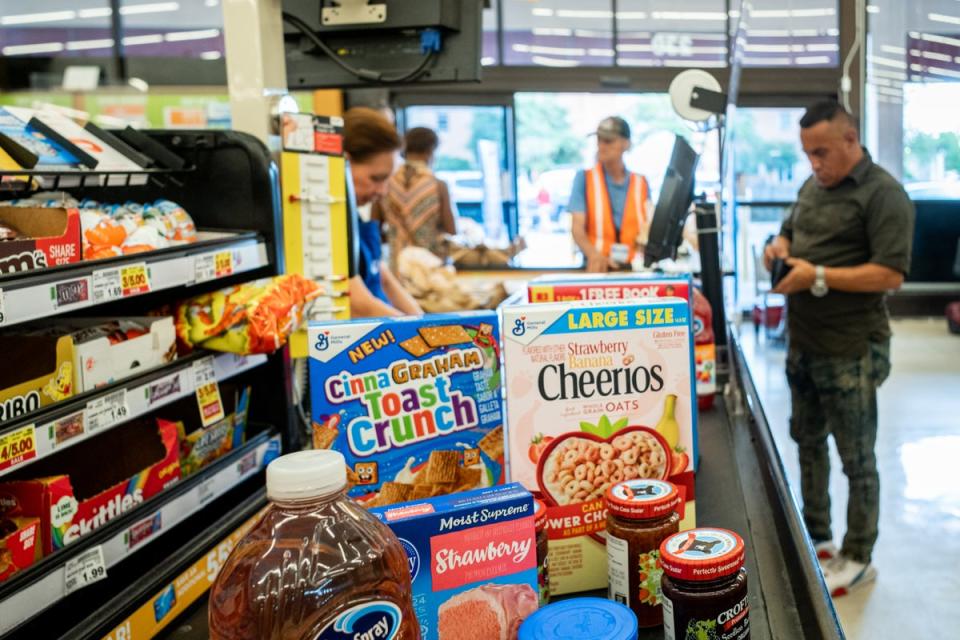Americans now get a quarter of their groceries from store brands as inflation eats into purchasing power

Americans are buying roughly one-quarter of their groceries from store brands, rather than nationally-recognized name brands, as shoppers continue to deal with rising prices on everyday goods.
As inflation continues to keep prices up across industries, Americans are turning to cheaper alternatives for groceries, the Wall Street Journal found. National brands still make up 78 cents of dollar shares - basically percent of sales if all sales equaled $1. However, store brands are seeing their shares grow from 18 cents in 2006 to 22 cents today.
While grocery price inflation slowed to its lowest point in nearly three years this month, the Associated Press reports, consumers are still looking to save money wherever possible.
Annual food prices remained steady at 2.2 percent in April, according to federal data. Officials say they expect grocery prices to continue to slow compared to recent years - but that hasn’t stopped Americans from looking at cheaper alternatives than brand names.

How are grocery sales changing?
Over the last year, store brand sales have grown nearly 5 percent across departments, while national brand sales have fallen about 3 percent, according to the Journal. Store brands - such as those offered by Kroger or Walmart’s Great Value line - are often significantly cheaper than recognizable names.
Store brands saw the biggest growth in deli, pet care and produce items.
Meanwhile, both store and national brand sales dipped for meat, baby care, frozen and health and beauty products. National brand sales fell the most for baby care, dropping some 6 percent over the last year, the Journal reports.
Name brand grocery sales fell by 2.5 percent, while store brand grocery sales grew by nearly 1 percent in the last year.
Now, experts have told the Journal store brands are now gunning to beat the well-known national brands — while shoppers tell the outlet they are concerned about rising prices for every day items.
“A $5 box of cereal would last exactly one breakfast,” Wofford Wise, a 40-year-old salesman from Tennessee, told the Journal. “Our food budget had exploded.”

Price comparison
Many store brands offer significant discounts to American households looking to stretch their budget. Here are some of the comparisons at grocery stores today of brand names versus their generic counterparts:
Chicken broth: Kroger 32 oz $1.49 / Pacific Foods 32 oz $3.69
Oven-roasted turkey breast: Kroger 9 oz $4.49 / Hillshire Farm 9 oz $5.49
Ketchup: Great Value 32oz $1.94 / Heinz 32oz $4.76
Laundry detergent: Great Value 88oz $7.67 / Gain 88oz $9.94
Garbage bags: Great Value 40-count $7.62 / Glad 40-count $13.78
Cereal: Great Value Cinnamon Crunch 20.25 oz: $2.98 / General Mills Cinnamon Toast Crunch 12 oz: $9.45
Inflation’s role
Inflation is impacting industries across the board as the economic impacts of the Covid-19 pandemic linger, the Associated Press reported this week.
While overall inflation fell from 7.1 percent in June 2022 to 2.7 percent in March, the first four months of 2024 brought skyrocketing prices. Last month, prices were up 2.7 percent compared to April 2023.
This overall inflation trend comes as grocery inflation slowed to its lowest point since October 2021 of .8 percent, according to the Associated Press.
These impacts will undoubtedly play a role in the 2024 presidential election, as former president Donald Trump continues to campaign on blaming President Joe Biden for rising prices. A recent Ipsos poll found that inflation continued to be a driving force among voters with 85 percent saying it would play a part in who they decide to pick in November. The overall economy was the only issue that was more important, with 88 percent saying it would play a part.
About 44 percent of people polled said they trust Trump to handle inflation, while only 30 percent said they trust Biden to deal with inflation.

 Yahoo News
Yahoo News 
